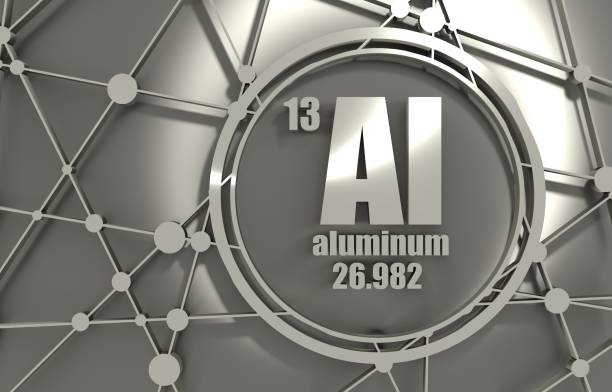Aluminum

Parameter Type: Drinking Water Testing for Volatiles
Parameter Name: Aluminum
What it is and Where it Comes From:
Aluminum is a chemical element with the symbol Al and atomic number 13. Aluminum has a density lower than those of other common metals, at approximately one third that of steel. It has a great affinity towards oxygen, and forms a protective layer of oxide on the surface when exposed to air. Aluminum visually resembles silver, both in its color and in its great ability to reflect light. It is soft, non-magnetic and ductile. Aluminum can leach from rocks and soil to enter any water source. It can be found as aluminum hydroxide, which is residual from the municipal feeding of aluminum sulfate. It can also be present as sodium aluminate from a process known as clarification or precipitation softening. Aluminum makes up around 8% of the Earth’s surface, making it the third most common element. It is often used in cooking utensils, containers, appliances and building materials, as well as in the production of glass, paints, rubber, and ceramics. Drinking water testing gives you several benefits like peace of mind, identifying contaminants in your water, and insight into health concerns. Safe Home offers Laboratory drinking water testing kits for aluminum, allowing you to collect your water sample and ship it directly to our EPA-Certified Laboratory. This platform of drinking water testing for aluminum will give you an accurate level based on the lowest level of a parameter our instruments can detect (Method Detection Level). Safe Home drinking water testing for heavy metals can be used for city and well water supplies. Drinking water testing should be done any time you notice a significant change in your water quality.
Health Effects:
At low levels, aluminum in food, air, and water is not likely harmful to your health. However, at high concentrations there is evidence linking aluminum to effects on the nervous system, with possible connections to several diseases, such as Parkinson’s, Alzheimer’s, and Lou Gehrig’s disease. Patients suffering from these diseases tend to have high levels of aluminum in some areas of their brains. It is not known if aluminum is causing these diseases or if the aluminum starts accumulating in people that already have the diseases. There is also a concern that aluminum may cause skeletal problems. There is no evidence to suggest that aluminum affects reproduction, or that it causes cancer.
Solutions to Contaminant Levels:
After drinking water testing for aluminum, how can it be removed? Some point-of-use water treatment devices, such as distillation and reverse osmosis, are effective in removing aluminum from water. Reverse osmosis is a process that removes foreign contaminants, solid substances, large molecules, and minerals from water by using pressure to push it through specialized membranes. Here’s how reverse osmosis works. Unlike osmosis, which is a passive process, reverse osmosis requires external force (pressure) to work. Pressure is applied to a highly concentrated solute solution, such as salt water, to pass through a membrane to a lower concentrate solution. The membrane allows water to flow through but blocks out larger molecules, like contaminants. The reverse osmosis process leaves higher concentrations of solute on one side and only the solvent, or freshwater, on the other. Distillation is the process involves boiling water to produce water vapor. The water vapor rises to a cool surface where it is condensed back into the liquid form. The dissolved salts are unable to vaporize and remain in the boiling solution. Deionization (DI) is the process, water is passed through a positive and negative electrode. The ion-selective membranes enable the positive ions to separate from the water and move towards the negative electrode. The result is de-ionized water with high purity. However, the water is first passed through a reverse osmosis unit first to remove the non-ionic organic contaminants. Who do I need to contact to find out more information about water quality in my area? Every community water supplier must provide an annual report to its customers, known as a Consumer Confidence Report (CCR). The report provides information on your local drinking water quality, including the water’s source, contaminants found in the water, and how consumers can get involved in protecting drinking water. How often does the local public water system preform drinking water testing? Frequency of drinking water testing depends on the number of people served, the type of water source, and types of contaminants. Certain contaminants are tested more frequently than others, as established by the Safe Drinking Water Act. You can find out about levels of regulated contaminants in your treated water for the previous calendar year in your annual Consumer Confidence Report (CCR).


